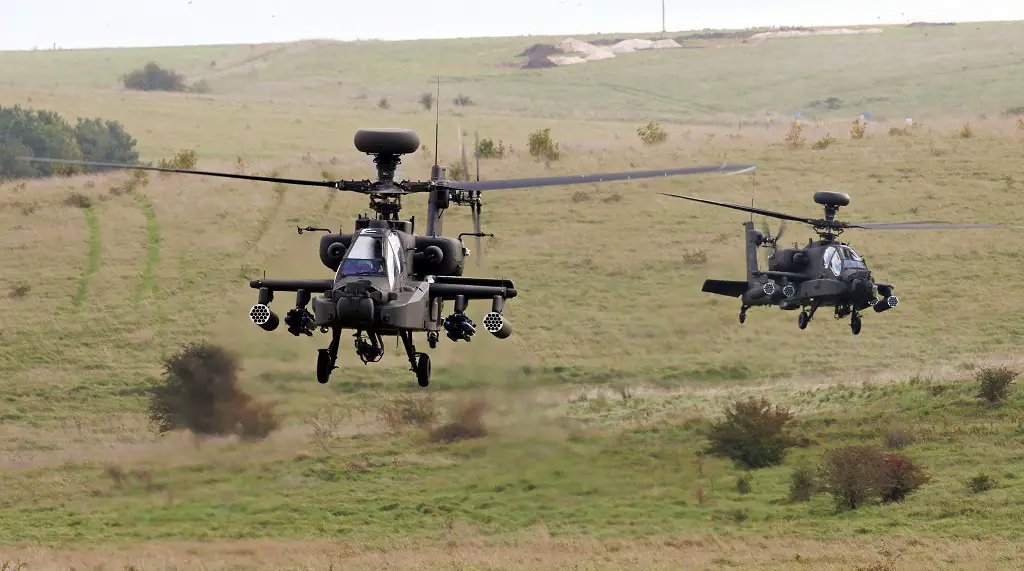[ad_1]

As the fleet successfully completed Exercise Iron Titan, the U.S. State Department approved the sale to UK of 3,000 JAGM missiles.
The British Army declared its first unit to fly the new AH-64E Apache Guardian, the 3 Regiment Army Air Corps (3 Regt AAC), ready for frontline duty after successfully completing Exercise Iron Titan. The exercise tested every aspect of the unit from its logistics and command and control procedures to the maintenance and operation of the state-of-the-art AH-64E in the field.
Iron Titan was meant to validate 3 Regt AAC in its core role providing an aviation deep attack battlegroup, made up of AH-64Es and the Wildcat reconnaissance helicopters of 1 Regiment Army Air Corps, to 3rd (UK) Division, the British Army’s warfighting division. Across the six weeks of the exercise, the unit deployed from its base at Wattisham Flying Station in Suffolk and set up temporary facilities at different locations while planning and executing strike missions on simulated enemy positions.
The newer AH-64E entered service in 2021 to replace the Apache Mk. 1 (or WAH-64) and is set to be a key element of how the British Army will fight in the coming decades. Compared to the older variant, today’s AH-64E Version 6, or v6, Apache features integrated technologies including communications and navigation capabilities to enhance situational awareness and coordination; a new, faster multi-core mission processor for advanced systems integration; and maritime capability in the Fire Control Radar for watercraft detection and identification along with a shorter engagement timeline.
“The AH-64E is the most advanced attack helicopter in the world and the step change it brings in lethality, agility, survivability and how it can communicate and integrate with other capabilities is nothing short of revolutionary”, said 3 Regt AAC’s Commanding Officer Lieutenant Colonel Rich Simcock. “Like any machine, the AH-64E is only as good as the people who operate it. To have got to where we are just two years after the first aircraft arrived in the UK reflects the hard work and dedication put in by everyone in the regiment.”

The helicopter’s improved drive system includes a split-torque face gear transmission, a new GE T700-701D engine and composite main rotor blades that ensure the Apache succeeds as a highly stable aerial weapons-delivery platform, says Boeing. And, speaking of weapons delivery, the UK is set to receive a new capability for its Apaches: the AGM-179 Joint Air-To-Ground Missile.
In fact, the U.S. State Department approved a possible Foreign Military Sale, worth 957.4 million USD, to satisfy the UK’s request for 3,000 JAGM missiles. JAGM combines a dual-mode seeker and guidance system with the combat-proven AGM-114R Hellfire missile bus to take precision engagement to the next level. The missile has been designed to be backward compatible with the M299 launcher and, with appropriate integration upgrades, with all platforms (air, ground and maritime) that currently are capable of employing Hellfire missiles.
The dual-mode sensor offers enhanced performance on the battlefield, combining Semi-Active Laser (SAL) and millimeter wave (MMW) radar sensors and providing precision strike and fire-and-forget capability against stationary and moving land and maritime and even airborne targets. This seeker enables JAGM users to strike multiple targets, near simultaneously, with more precision in adverse weather and obscured battlefield conditions which increases user survivability and effectiveness.
[ad_2]
Source link
